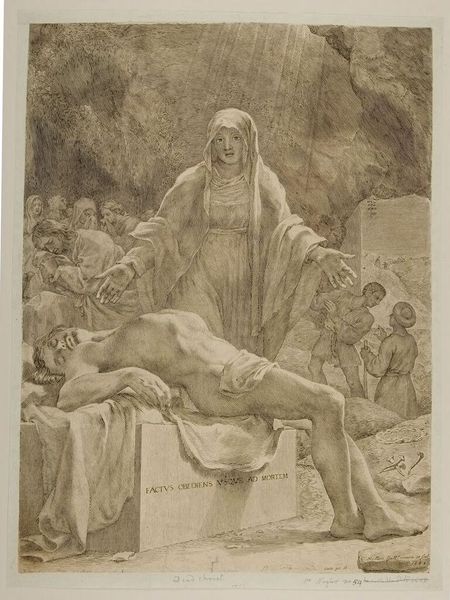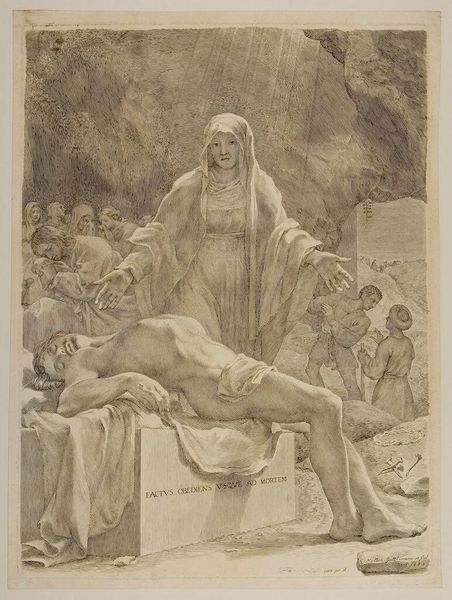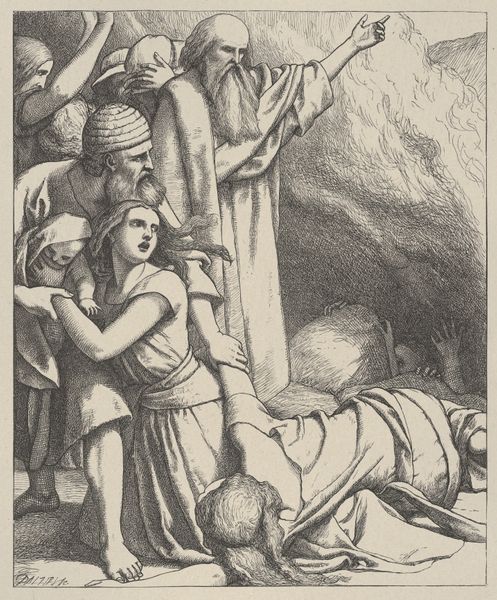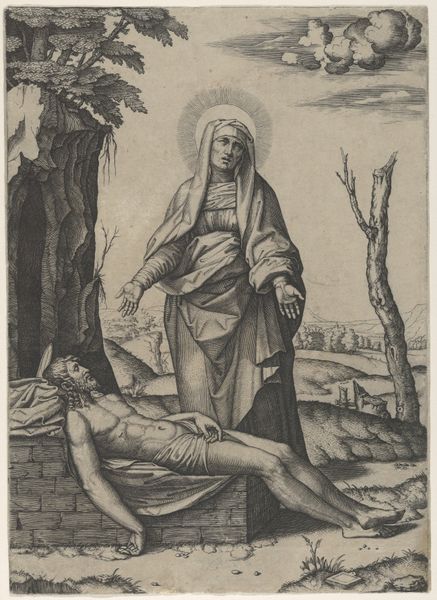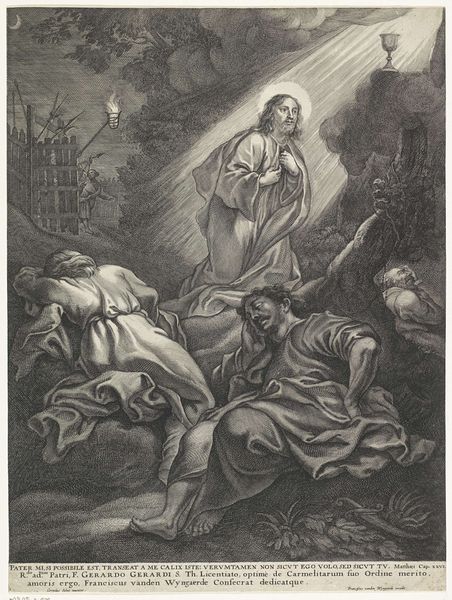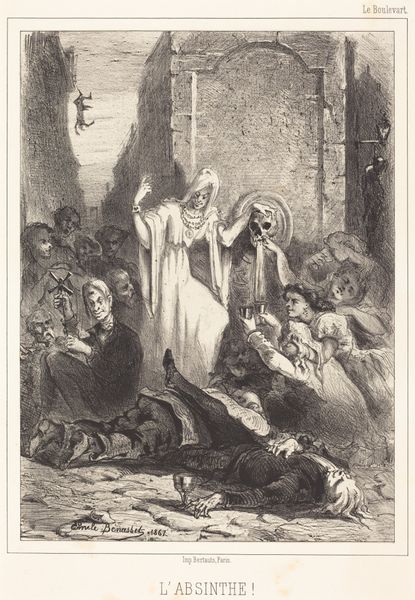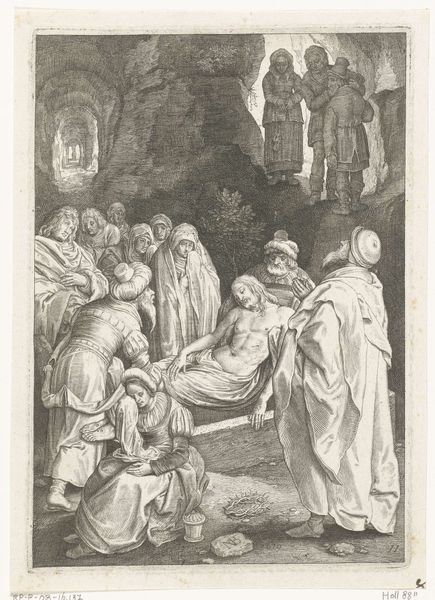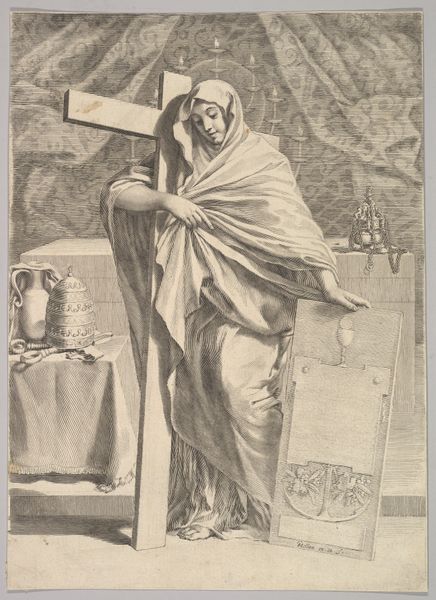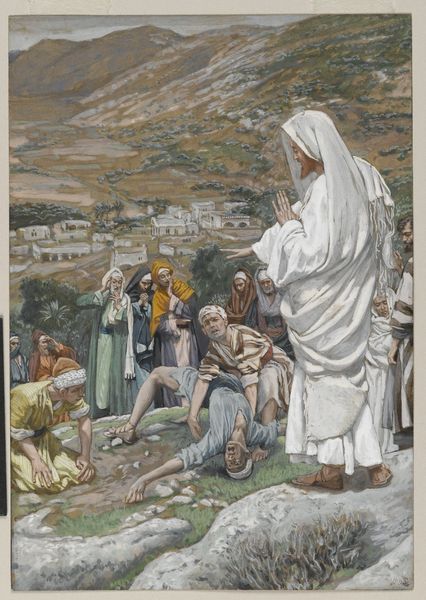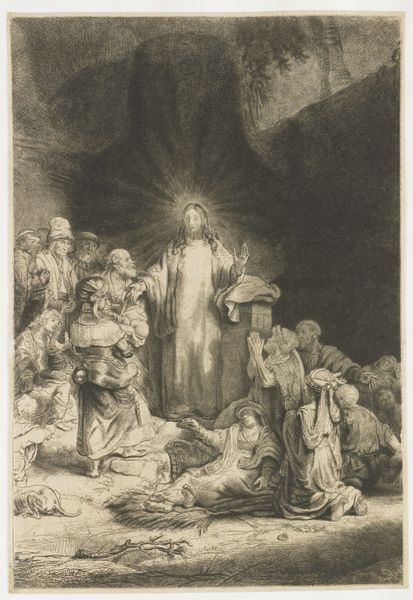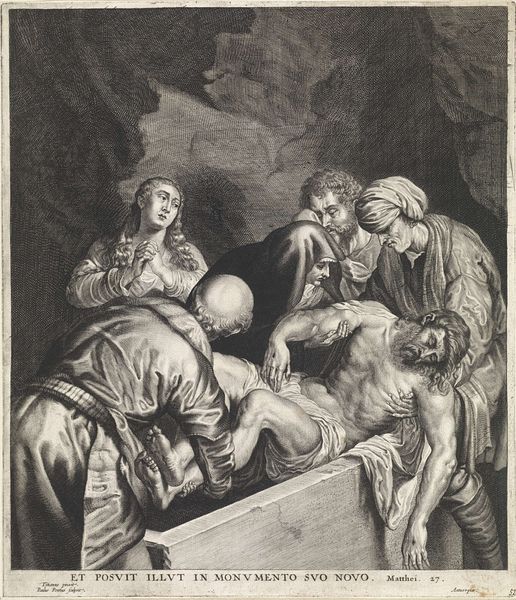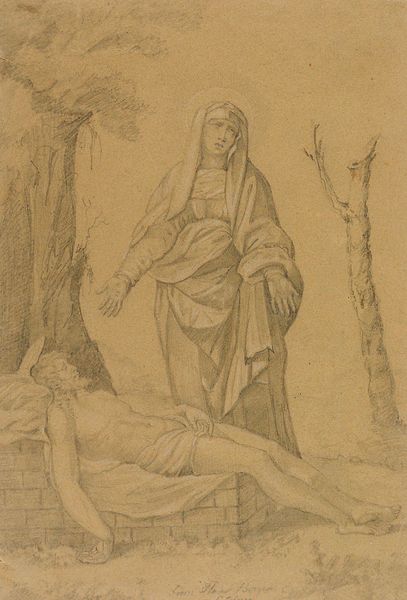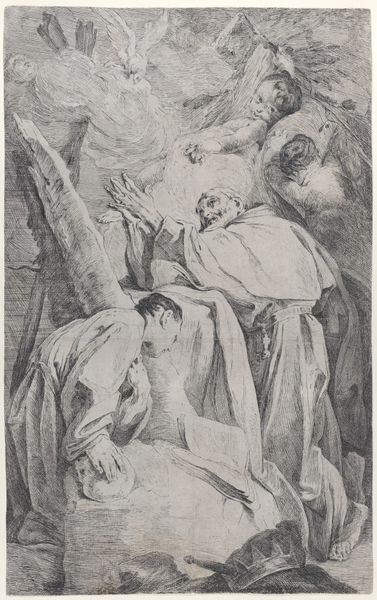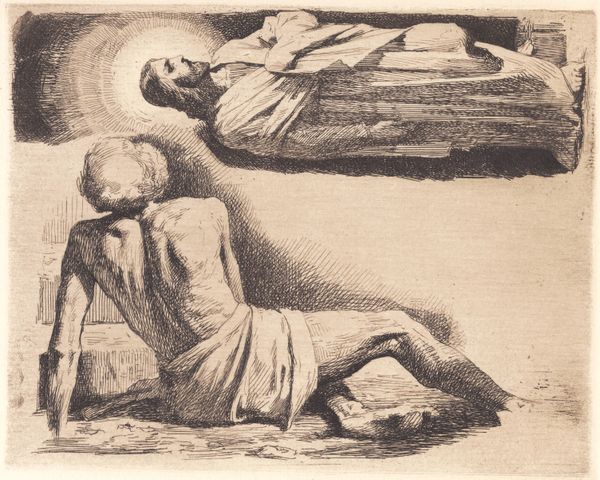
drawing, print, engraving
#
drawing
#
allegory
#
narrative-art
#
baroque
# print
#
landscape
#
figuration
#
pencil drawing
#
history-painting
#
engraving
Dimensions: sheet: 19 3/8 x 14 7/16 in. (49.2 x 36.7 cm) plate: 17 1/8 x 12 11/16 in. (43.5 x 32.3 cm)
Copyright: Public Domain
Editor: Claude Mellan's "Lamentation," created in 1683, really strikes me. The starkness of the engraving emphasizes the profound grief. What symbols or deeper meanings do you see woven into this scene? Curator: It's fascinating how Mellan uses the single line technique to evoke so much emotion. The Virgin Mary's gesture, arms outstretched, isn't just a sign of mourning. It recalls the ancient gesture of supplication. Consider how she mediates between the earthly realm, where Christ's body lies, and the divine light filtering from above. Does that division between earthly and divine echo through the work, in your opinion? Editor: Absolutely. The light almost ignores the earthly figures. It feels like a visual representation of their disconnect from hope in that moment. Is there significance in the other figures in the background? Curator: The figures attending the tomb become a sort of chorus, don't they? They represent the broader community of believers grappling with loss. Notice how their faces are obscured. This invites viewers to project their own grief and experiences onto them, creating a shared space of lament. Mellan is almost crafting a stage, and you're compelled to take part. Editor: So it’s less about depicting a historical event, and more about creating a space for collective grief. The image's enduring power is clearer to me now. Curator: Precisely. And think about the inscription on the tomb... the Latin phrase acting as a constant, unwavering reminder. These textual elements become an important element within the imagery, anchoring its significance within the moment. Editor: Thank you. This has given me so much to think about. I hadn't considered the interactive role the viewers play. Curator: My pleasure. Recognizing the symbolic language allows us to truly see the historical significance embedded in the work.
Comments
No comments
Be the first to comment and join the conversation on the ultimate creative platform.
